That has been my modus operandi for planning and planting my outdoor spaces ever since. One of the pleasures of spring is welcoming my floral friends as they once again bloom all over my garden—purple, magenta, red and orange swaths of color are exclamation marks against green foliage. And I love giving bouquets to loved ones. The wonderful thing about growing lots of flowers is there’s enough to share with family and friends while still having plenty left to enjoy in your garden. Edible flowers are a great addition to a cook’s garden. Not only are they great as a garnish, they add color to salads and cakes, drinks and stir-fries. And of course, some of the bigger ones can be stuffed. When I was little, my mother made my dad an angel food cake, his favorite, for his birthday every year and decorated it with whipped cream and geraniums—an elegant and dramatic effect. She also made us flower sandwiches and when my girls were young, they loved doing the same. Sometimes I would surprise them by including a flower sandwich in their lunchboxes, especially if they were having a rough day. (David was a much pickier eater and wasn’t a fan of floral food.) Over Spring Break, I had the delight of carrying on this tradition with Fable. (Archer wasn’t interested…he takes after his uncle!)
Some of my favorite edible flowers to use for flower sandwiches are petunias, geraniums, roses, day lilies, nasturtiums, marigolds, rosemary, violets, and borage. For a full list of edible flowers, go here. Only use flowers from established plants in pesticide-free gardens. (NOTE: It’s important to supervise this activity so only EDIBLE flowers end up in the sandwiches. Also, wait until your children are old enough to understand the difference between edible and not edible.)
To make the sandwiches, simply spread butter, hummus, or cream cheese thinly on the bread and design with flowers. For large flowers, separate out the petals to make it easier. Serve open faced. These are great for tea parties!
A couple of weeks ago, Kim from Kim’s Kitchen Sink asked what to do with the abundance of nasturtiums in her yard. Nasturtiums are delicious and nutritious and not only are beautiful in flower sandwiches but can be used in many recipes. They have a mild spicy flavor and to me taste like spring. Toss the flowers in your salads, stuff with cheese for appetizers, or add to pizzas. The leaves are edible, too, and can be stuffed (instead of grape leaves) into dolmas. They can be torn and added to salad greens, or made into soups and risottos. Or use all parts of the plant to make a lovely spring pesto.
Nasturtium Pesto
2 packed cups of nasturtium leaves, stems, and flowers
2 cloves garlic
½ cup walnuts
1/3 cup freshly grated Parmesan cheese
¼ teaspoon salt
½ cup good quality olive oil
Pick leaves, flowers and stems, checking the back of the leaves and the inside of the flowers for bugs. Wash carefully and dry thoroughly.
Add nasturtiums to food processor or blender with garlic, walnuts, salt, and Parmesan cheese.
Pulse and blend until smooth.
Toss with pasta, cooked beans (gigande, fava, or lima), or boiled new potatoes. Garnish with nasturtium flowers.
Love,
WWW

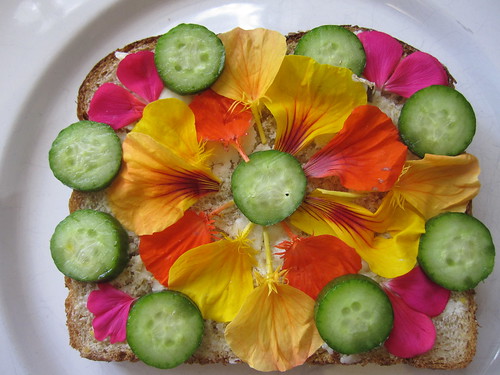

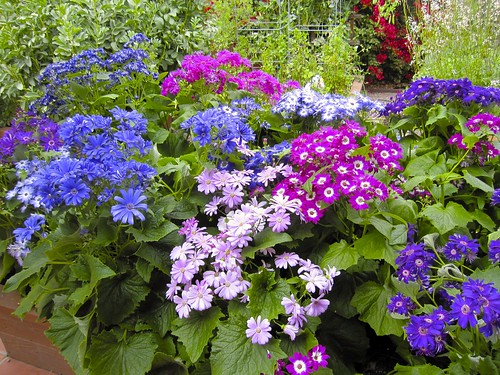
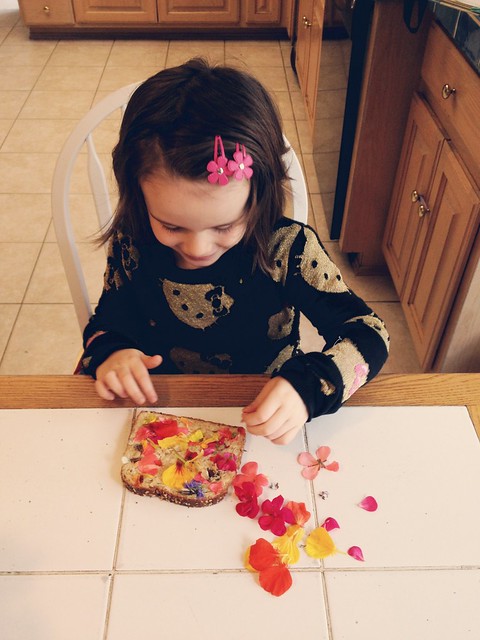

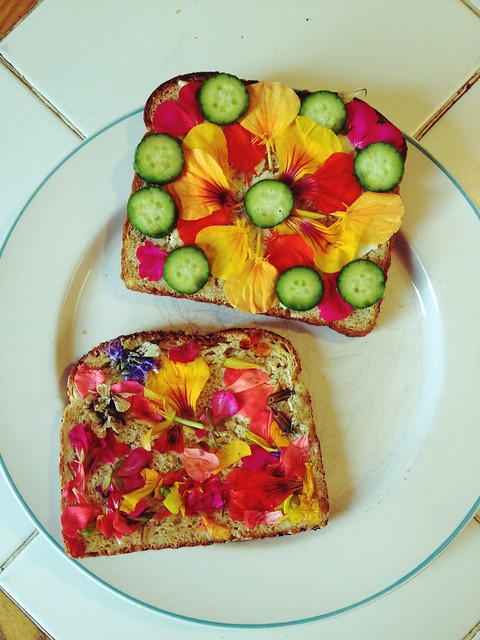
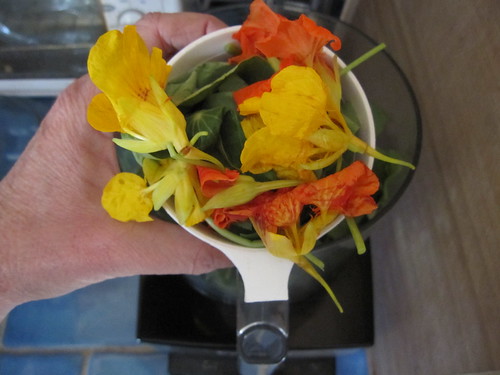

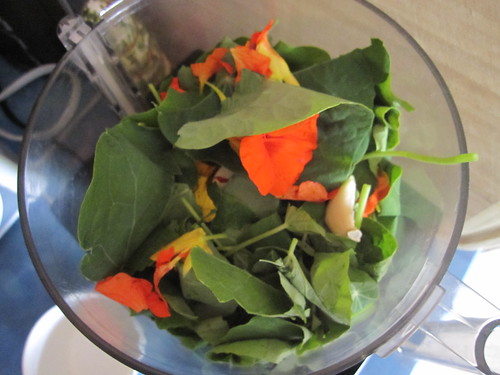
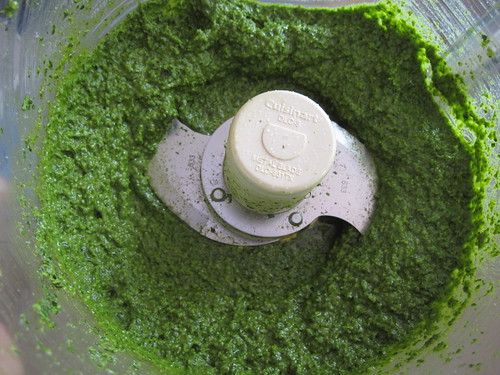


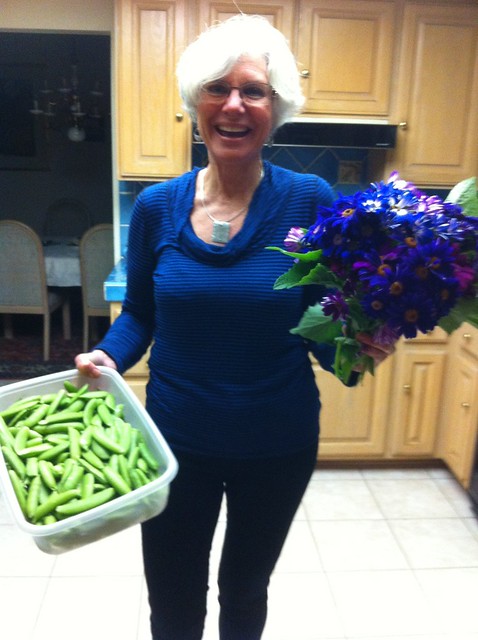

0 comments:
Post a Comment